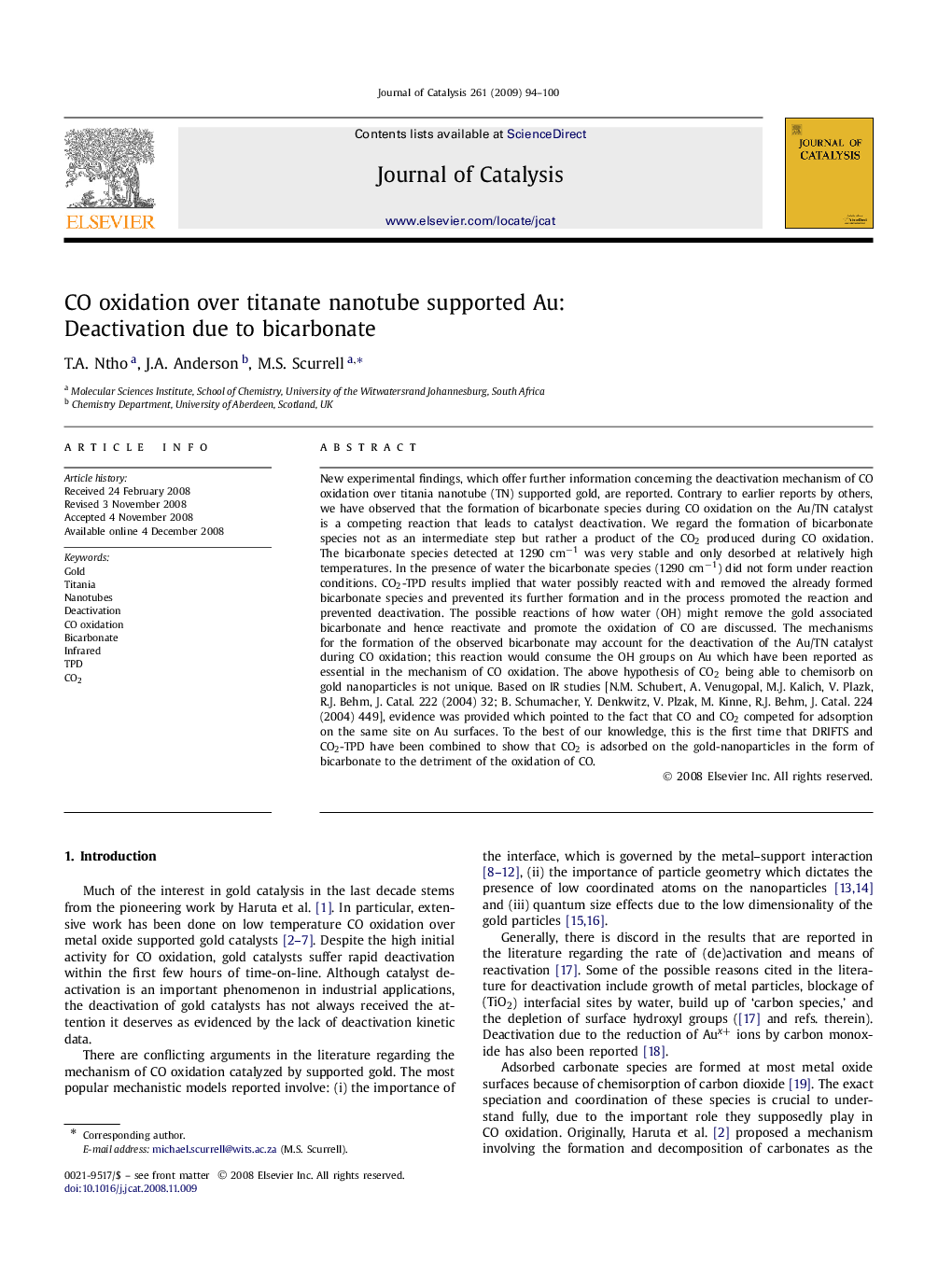| کد مقاله | کد نشریه | سال انتشار | مقاله انگلیسی | نسخه تمام متن |
|---|---|---|---|---|
| 62682 | 47650 | 2009 | 7 صفحه PDF | دانلود رایگان |

New experimental findings, which offer further information concerning the deactivation mechanism of CO oxidation over titania nanotube (TN) supported gold, are reported. Contrary to earlier reports by others, we have observed that the formation of bicarbonate species during CO oxidation on the Au/TN catalyst is a competing reaction that leads to catalyst deactivation. We regard the formation of bicarbonate species not as an intermediate step but rather a product of the CO2 produced during CO oxidation. The bicarbonate species detected at 1290 cm−1 was very stable and only desorbed at relatively high temperatures. In the presence of water the bicarbonate species (1290 cm−1) did not form under reaction conditions. CO2-TPD results implied that water possibly reacted with and removed the already formed bicarbonate species and prevented its further formation and in the process promoted the reaction and prevented deactivation. The possible reactions of how water (OH) might remove the gold associated bicarbonate and hence reactivate and promote the oxidation of CO are discussed. The mechanisms for the formation of the observed bicarbonate may account for the deactivation of the Au/TN catalyst during CO oxidation; this reaction would consume the OH groups on Au which have been reported as essential in the mechanism of CO oxidation. The above hypothesis of CO2 being able to chemisorb on gold nanoparticles is not unique. Based on IR studies [N.M. Schubert, A. Venugopal, M.J. Kalich, V. Plazk, R.J. Behm, J. Catal. 222 (2004) 32; B. Schumacher, Y. Denkwitz, V. Plzak, M. Kinne, R.J. Behm, J. Catal. 224 (2004) 449], evidence was provided which pointed to the fact that CO and CO2 competed for adsorption on the same site on Au surfaces. To the best of our knowledge, this is the first time that DRIFTS and CO2-TPD have been combined to show that CO2 is adsorbed on the gold-nanoparticles in the form of bicarbonate to the detriment of the oxidation of CO.
The formation of bicarbonate species on Au clusters on TiO2 nanotubes causes deactivation during CO oxidation catalysis.Figure optionsDownload high-quality image (38 K)Download as PowerPoint slide
Journal: Journal of Catalysis - Volume 261, Issue 1, 1 January 2009, Pages 94–100